HDL cholesterol, often called “good” cholesterol, helps keep your heart and blood vessels healthy. Getting enough of it can lower your risk of heart disease and stroke. The right food for good HDL cholesterol can make a real difference in your numbers and overall health. This guide breaks down the best diet choices to help you boost your HDL, so you can enjoy tasty food and stronger heart health at the same time.
Understanding HDL Cholesterol and Its Role in Heart Health
HDL cholesterol, known as high-density lipoprotein, is often called the “good cholesterol” for a reason. When you hear about lowering cholesterol, the message can get mixed up. The truth is, our bodies actually need some cholesterol to function well. Not all cholesterol is the enemy, and HDL brings plenty of positive benefits, especially for your heart.
What Is HDL Cholesterol?
Cholesterol is a type of fat found in your blood, but not all cholesterol is created equal. HDL stands out because it acts more like a cleanup crew than a troublemaker. It travels through your bloodstream picking up extra cholesterol that other types leave behind. HDL sweeps this extra cholesterol to your liver so your body can get rid of it. Imagine HDL as the heart’s street sweeper, working hard to clear out the “bad” stuff.
Why HDL Is Called “Good” Cholesterol
Doctors call HDL cholesterol “good” because it helps remove excess LDL (the “bad” cholesterol) from your blood. Too much LDL can get stuck to the walls of your blood vessels, causing them to narrow. When that happens, it raises the risk of blockages—which means a higher chance of heart attack or stroke.
HDL works to:
- Carry bad cholesterol away from the arteries.
- Support overall blood flow.
- Lower inflammation in the blood vessels.
The more HDL you have in your blood, the greater the chance it will help clean out the harmful stuff before it can cause trouble.
The Role of HDL in the Body
Think of HDL cholesterol as your body’s heart protector. Its main job is “reverse cholesterol transport.” This means it takes cholesterol that’s not needed and returns it to the liver for disposal. Without enough HDL, cholesterol can pile up in your arteries, raising your chances of heart problems.
HDL also:
- Guards against damage to your artery walls.
- Helps fight off inflammation that can trigger heart disease.
- Supports the natural repair of your blood vessels.
Your body depends on the balance between all types of cholesterol. HDL keeps things in check.
Benefits of High HDL Levels
When your HDL cholesterol is at a healthy level, your heart thanks you. People with higher HDL numbers are often at a lower risk for serious heart issues.
Here’s what you gain by keeping HDL levels up:
- Protection against buildup in the blood vessels.
- Lower risk for heart attack and stroke.
- A better shot at living a longer, healthier life.
Eating more food for good HDL cholesterol can have a big effect on these numbers. You don’t need expensive supplements or fancy treatments. Simple changes to what you eat can help boost your natural HDL, supporting your heart health every single day.
For those interested in more ways to protect your heart, learning how your daily habits impact cholesterol can make all the difference. Explore more insights on healthy lifestyles in tips for overall wellness and nutrition for simple advice you can use.
Risks of Low HDL Cholesterol
If your HDL cholesterol drops too low, it signals more risk for your heart. Low HDL means your body can’t clear out the bad cholesterol as well.
Risks linked with low HDL levels include:
- A higher chance of heart disease.
- More plaque buildup in your arteries.
- Greater risk of stroke.
Paying attention to what you eat can raise your HDL levels. Foods rich in healthy fats, fiber, and antioxidants can make a real difference. That’s why finding the best food for good HDL cholesterol is so important for long-term heart health.
Making small changes in your grocery cart and daily meals lays the groundwork for a stronger, healthier heart for years to come.
Top Foods to Boost Good HDL Cholesterol
Eating the right foods every day helps your body raise HDL, the “good” cholesterol. You don’t have to make huge changes or give up flavor. It starts with understanding which foods have proven benefits for improving your cholesterol profile. If you want food for good HDL cholesterol, focus on these top choices to add color, nutrition, and heart-healthy fats to your plate.
Fatty Fish and Omega-3 Rich Foods
Fatty fish are a powerhouse for heart health. Salmon, sardines, mackerel, trout, and herring are packed with omega-3 fatty acids that raise HDL levels while supporting overall cholesterol balance. Omega-3s also help reduce inflammation and lower triglycerides, which means extra protection for your arteries.
Aim to eat fatty fish at least two times per week. Each serving should be about 3-4 ounces, which is about the size of a deck of cards. Not a fan of fish? Try adding plant-based omega-3 sources like chia seeds, ground flaxseed, or walnuts to your meals. Chia and flaxseeds mix well into smoothies, oatmeal, or yogurt.
Some top omega-3-rich choices:
- Wild salmon (baked, grilled or poached)
- Sardines (fresh or canned)
- Mackerel
- Chia seeds or ground flaxseed (for salads or breakfast bowls)
- Walnuts (snack or salad topper)
Adding these foods can help your body improve HDL naturally, without the need for supplements.
Nuts, Seeds, and Heart-Healthy Oils
Nuts and seeds belong on your list if you want more food for good HDL cholesterol. Almonds, walnuts, chia seeds, and flaxseeds all deliver heart-friendly unsaturated fats and fiber. These fats help raise HDL and support overall cholesterol balance.
Olive oil stands out as one of the best oils for heart health, thanks to its monounsaturated fat content. Drizzling extra-virgin olive oil over salads, roasted veggies or whole grain dishes is a simple way to get these benefits.
Research shows people who eat a small handful of nuts (about 1 ounce) most days boost their HDL and lower their risk of heart disease. Just keep portion sizes in mind, since nuts are calorie-dense.
Key nutrients and benefits found in these foods:
- Vitamin E (protects artery walls)
- Plant sterols (combat LDL)
- Alpha-linolenic acid (in chia and flaxseeds)
- Monounsaturated and polyunsaturated fats (raise HDL, lower LDL)
For more about ways to use healthy food in your daily meals, check out these keto bread recipes tips, many of which overlap with heart health.
Fruits, Vegetables, and Whole Grains
Foods rich in fiber are a powerful ally against high cholesterol. Fruits, vegetables, and whole grains help your digestive system sweep extra cholesterol out of your body before it can cause harm. Fiber also helps keep you full, stabilize blood sugar, and support healthy weight—the perfect combo for heart health.
Oats and barley are especially good for HDL because they have a soluble fiber called beta-glucan, which helps manage cholesterol levels. Leafy greens, berries, apples, pears, and beans are all great sources of fiber and antioxidants.
High-fiber foods to add to your plate:
- Oats (make overnight oats or oatmeal bowls)
- Barley
- Beans and lentils
- Broccoli, carrots, and leafy greens
- Berries and apples
A colorful plate not only makes meals more appealing, but it also gives your heart the nutrients it needs to thrive.
Avocados and Plant-based Healthy Fats
Avocados are loaded with monounsaturated fats that help boost HDL while lowering bad cholesterol. They’re creamy, versatile, and easy to add to salads, sandwiches, toast, or even smoothies. Because avocados are a plant-based source of healthy fats, they fit well into most diets—even if you’re avoiding animal-based foods.
Plant oils like canola and sunflower also contain healthy fats and can replace butter or lard in cooking. When you build meals around avocados, nuts, seeds, and plant oils, you’re helping your heart every time you eat.
Curious about the broader effects of a plant-rich eating style? Explore this plant-based cookbook to see how these foods improve not just HDL, but your mind and body too.
Swapping out saturated fats for rich, plant-based options is an easy and tasty way to give your HDL a lift and support your well-being every day.
Dietary Tips and Habits to Maximize HDL Benefits
To truly enjoy the perks of higher HDL cholesterol, you need more than a few healthy meals here and there. Lasting results come from building new habits and weaving them into your daily routine. Let’s look at practical ways to organize your meals to raise HDL and how daily choices beyond the plate can multiply the benefits of food for good HDL cholesterol.
Sample Daily Meal Plan for Raising HDL
You don’t need fancy or expensive foods to nudge your HDL up—just a consistent routine built around smart choices. Here’s an example of a heart-healthy day that prioritizes food for good HDL cholesterol:
Breakfast
- Oatmeal topped with fresh berries and chia seeds
- One small handful of walnuts
- Green tea or black coffee (skip the sugar and creamer)
Morning Snack
- Sliced apple with almond butter
Lunch
- Grilled salmon on a bed of mixed greens (spinach, kale, arugula) with cherry tomatoes and red onion
- Olive oil and lemon juice vinaigrette
- Whole grain roll or slice of whole wheat bread
Afternoon Snack
- Carrot sticks with hummus
Dinner
- Stir-fried tofu or chicken breast with broccoli, bell pepper, and carrots in canola oil
- Barley or quinoa on the side
- Sliced avocado
Evening Snack (optional)
- Fresh berries or a small serving of Greek yogurt with flaxseed
Ready for even more ideas? You can find creative healthy eating meal plan for weight loss as a reference, which features balanced breakfast options and meals you can tweak to support both weight and cholesterol goals. These plans highlight how easy it is to make sure your day is filled with food for good HDL cholesterol.
Combining Diet with Lifestyle Choices
Raising your HDL works best when you pair healthy eating with other positive shifts. Think of it as a team effort—every player counts toward protecting your heart.
Here are a few habits that pack a punch when combined with food for good HDL cholesterol:
- Get moving every day. Cardio exercise, such as brisk walking, jogging, cycling, or swimming, encourages higher HDL. Even 30 minutes most days can produce a real improvement.
- Quit smoking. Tobacco steals away your HDL numbers and damages vessels. Kicking the habit is one of the fastest ways to help your heart.
- Watch your portion sizes. Eating too much, even of healthy foods, can stall your results. Use smaller plates and bowls to prevent accidental overeating.
- Limit ultra-processed foods. Packaged snacks, fried foods, and foods with trans fats can push HDL down and LDL up. Focus on whole, fresh ingredients instead.
- Maintain a healthy weight. Shedding extra pounds can lift your HDL. Simple swaps, like trading white bread for whole grains and soda for water, add up over time.
Looking for more support on eating well and managing weight? Explore healthy eating tips for weight loss for friendly, actionable advice that makes pairing diet with smarter choices easier.
Pairing good habits with food for good HDL cholesterol is like giving your heart a double layer of protection. Small steps, repeated daily, quickly add up and make a real difference you can feel—and your future self will thank you for making the change.
Conclusion
Small changes to your diet can build strong gains for your heart. Adding food for good HDL cholesterol, like fatty fish, nuts, seeds, avocados, and plenty of fiber-rich produce, is a proven way to nudge those numbers in the right direction.
Every meal is a fresh chance to support your health, and each healthy swap pushes you closer to your goals. Heart-friendly eating is not about restriction but about enjoying wholesome foods that work hard for your well-being.
Stay motivated to make these shifts part of your daily routine. If you want extra tips on building a heart-healthy lifestyle, explore these healthy habits for a better life. Your future heart will thank you for the effort you put in today.
FAQ:
What foods help raise HDL cholesterol?
Eggs, extra virgin olive oil, fatty fish like salmon, nuts, seeds, and avocados all help increase HDL cholesterol. These foods contain healthy fats that support heart health. Whole grains and legumes can help too.
How does HDL cholesterol protect my heart?
HDL cholesterol picks up excess cholesterol from your blood and brings it to your liver, where your body gets rid of it. This process lowers your risk of artery buildup and heart disease.
Can eating more fat improve HDL levels?
Healthy fats, such as those in olive oil, nuts, and fatty fish, can help raise HDL cholesterol. Avoid trans fats and too much saturated fat, as these may lower HDL and harm your heart.
Does eating sugar affect HDL cholesterol?
Yes, eating lots of added sugar can lower HDL cholesterol and raise your risk for heart disease. Cutting back on soda, candy, and processed foods can help keep HDL levels healthy.
Is exercise better than food for boosting HDL?
Exercise helps a lot, but food matters too. Regular activity and a healthy diet work together to raise HDL cholesterol more than either alone.
Are there foods I should avoid to protect HDL?
Yes, skip foods high in trans fats—these are in many fried foods and packaged snacks. Limit processed meats and baked goods made with hydrogenated oils.
How much does fiber matter for HDL?
Soluble fiber, found in oats, beans, lentils, and fruits, helps raise HDL cholesterol and lower bad cholesterol. Aim for at least 25-30 grams of fiber each day for heart health.
Can alcohol affect HDL cholesterol?
Moderate alcohol intake, like one drink per day for women and two for men, can raise HDL. But drinking more than this can harm your heart and overall health.
Do plant-based diets support healthy HDL cholesterol?
Yes, plant-based diets rich in fruits, vegetables, nuts, seeds, and whole grains can help. They support overall cholesterol balance and lower your heart risk.
How quickly can diet changes affect HDL cholesterol?
Improvements can show up in a few weeks, but bigger changes may take a few months. Sticking with these habits long term brings the best results.
Should I take supplements to boost HDL?
Food works better than supplements for raising HDL. Most people don’t need supplements unless their doctor suggests them. Focus on a balanced, heart-friendly diet first.
What’s the best breakfast to boost HDL?
Try oatmeal with berries and nuts, or an avocado toast with whole-grain bread. Eggs cooked in olive oil with spinach are another great choice.
Do dairy foods affect HDL cholesterol?
Some full-fat dairy foods can slightly raise HDL, but they also raise LDL (bad cholesterol). Low-fat dairy or plant-based options are healthier picks for most people.
Can losing weight improve HDL cholesterol?
Yes, losing even 5-10% of your body weight can help raise HDL cholesterol, especially if you pair weight loss with healthier eating and more activity.


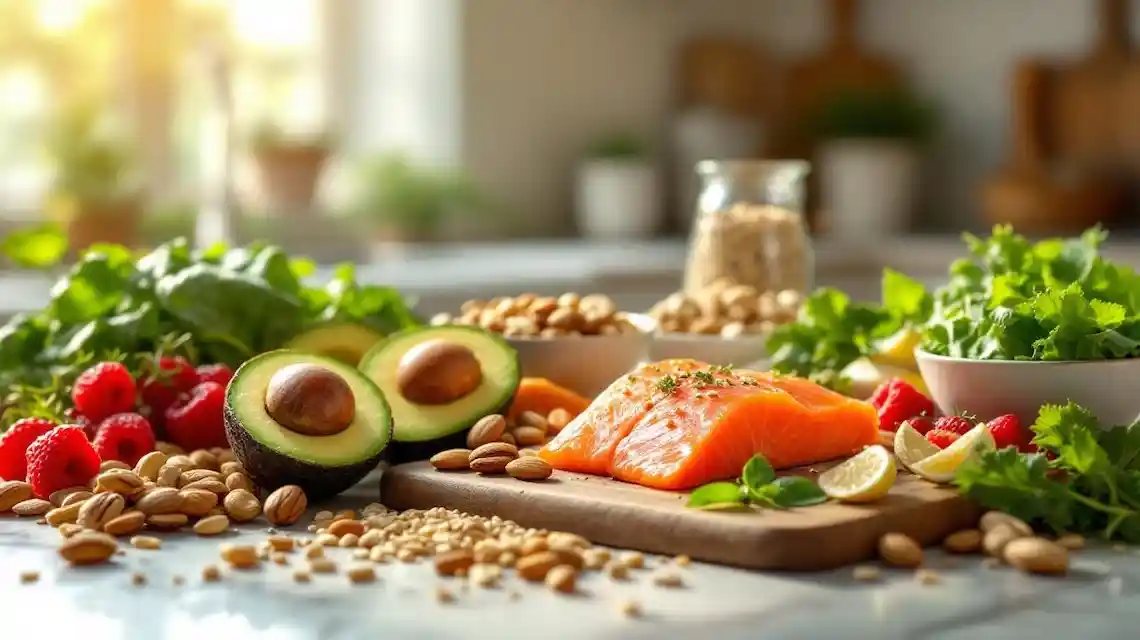
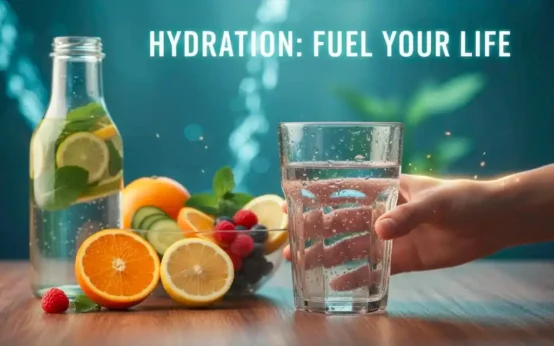 Importance of Hydration for Your Brain, Body, and Everyday Energy
Importance of Hydration for Your Brain, Body, and Everyday Energy 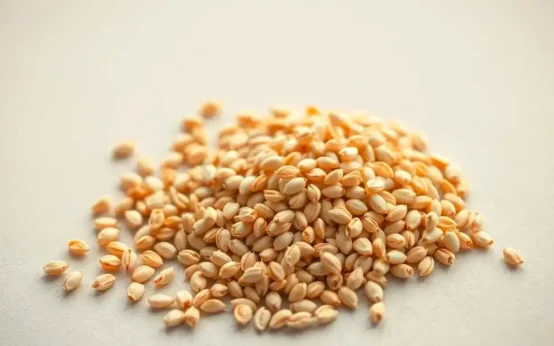 Health Benefit of Sesame Seed
Health Benefit of Sesame Seed 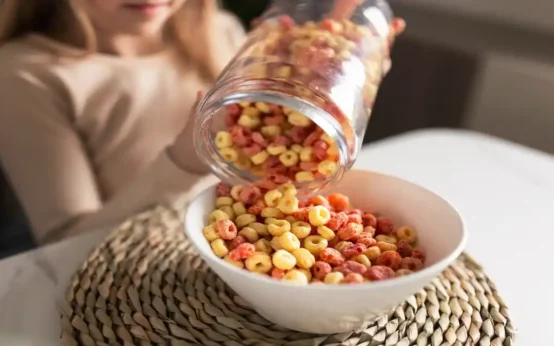 Healthiest Breakfast Cereal for Children
Healthiest Breakfast Cereal for Children  Anxiety Management Techniques
Anxiety Management Techniques 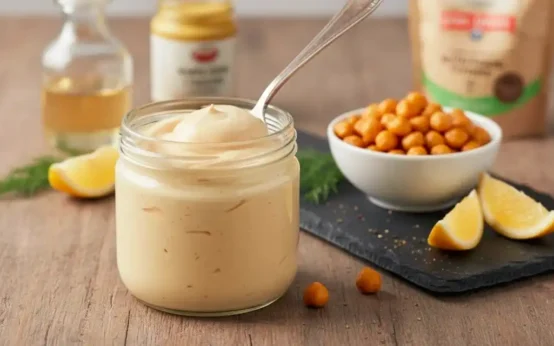 Vegan Oil Free Mayonnaise Recipe
Vegan Oil Free Mayonnaise Recipe 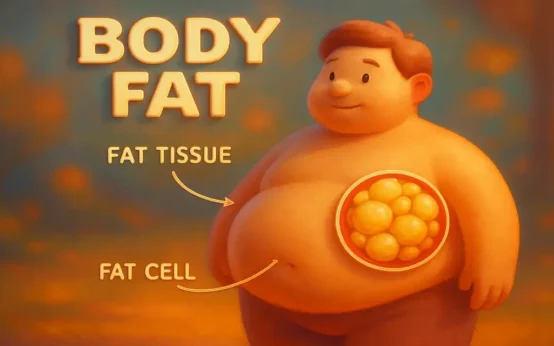 What Makes Fat in Our Body?
What Makes Fat in Our Body?